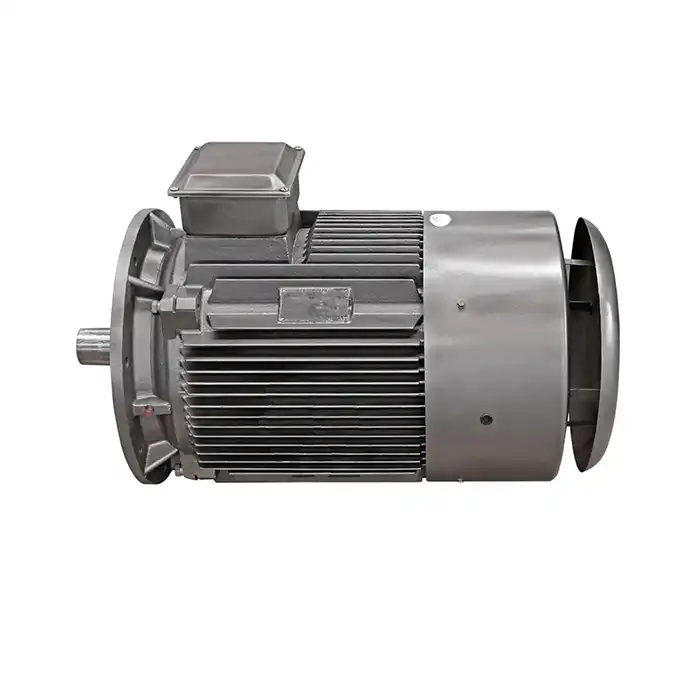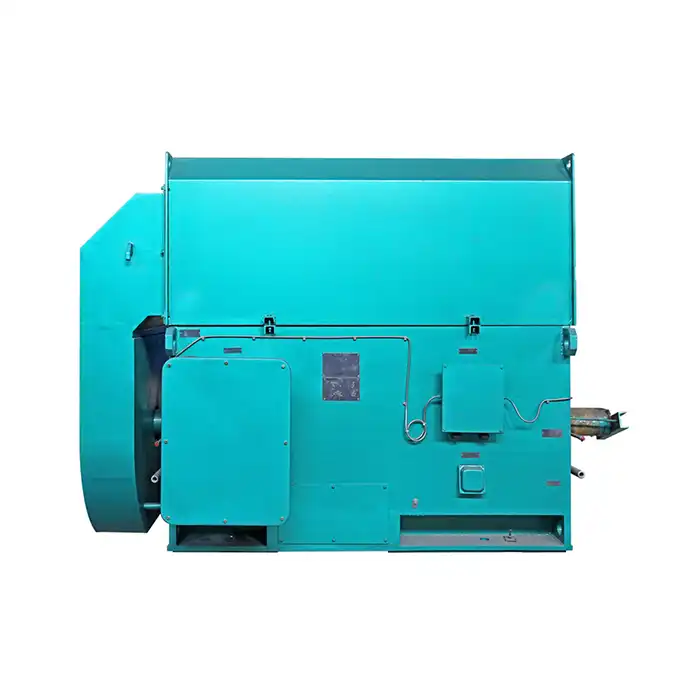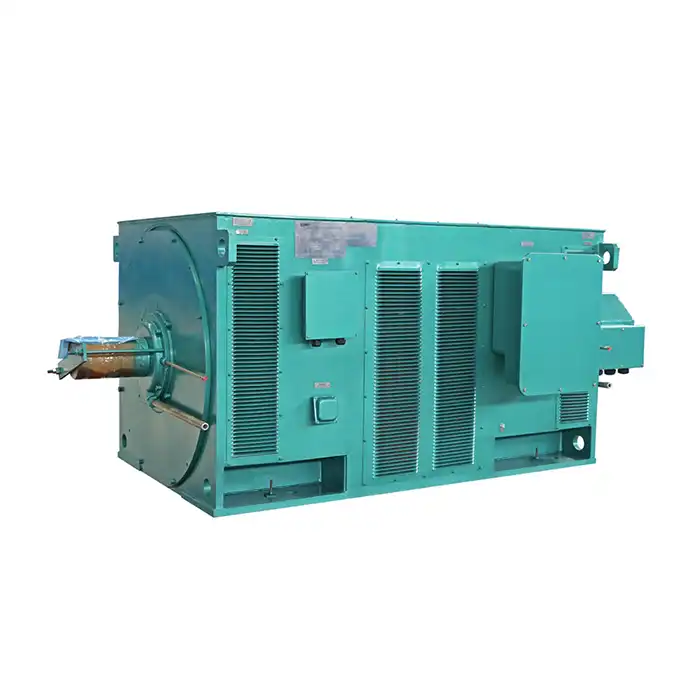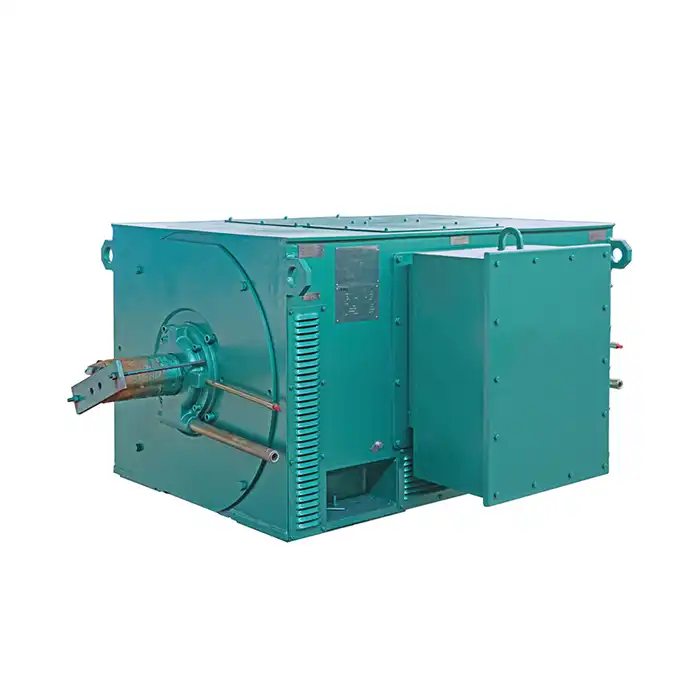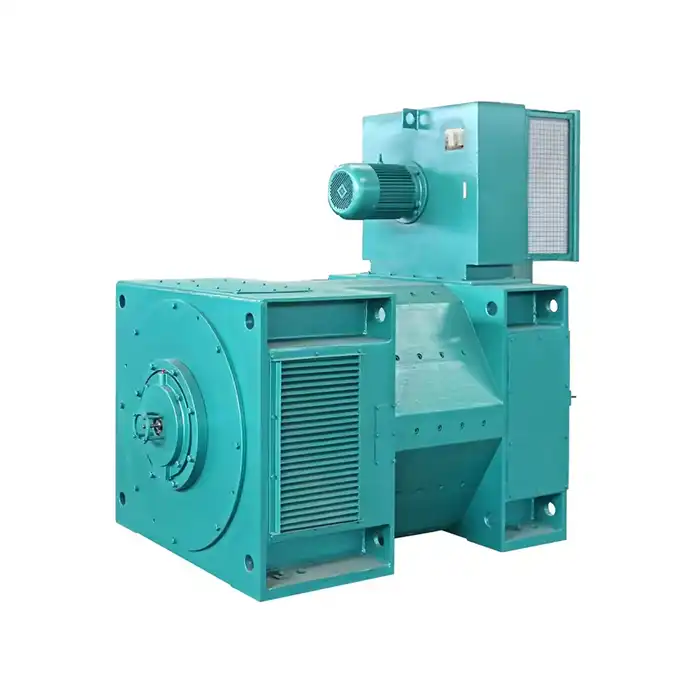How to Calculate Starting Current for Medium DC Motors?
Understanding the starting current of Z Series Medium DC Motors is crucial for proper motor selection and system design. This blog post will guide you through the process of calculating starting current, exploring the factors that influence it, and discussing protection methods for high inrush current situations.
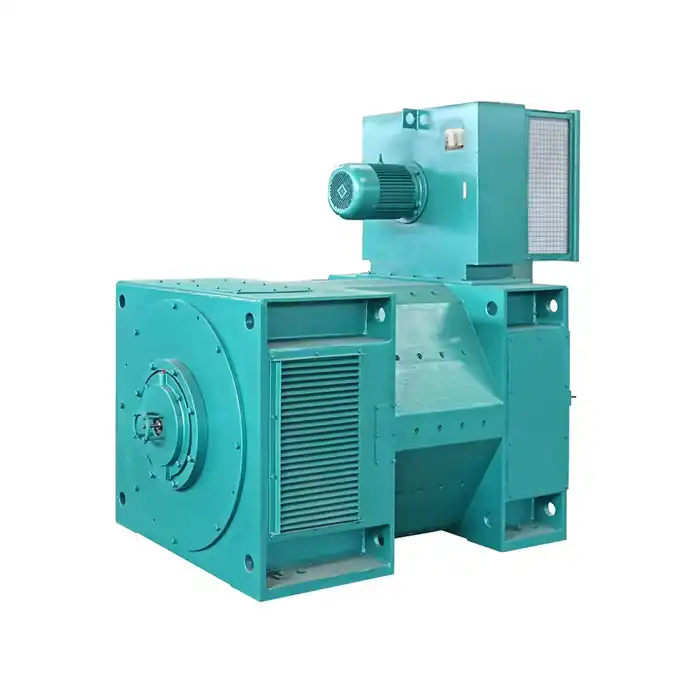
Product Specifications:
| Power Range: | 59kW to 1600kW |
| Voltage: | 220V to 750V |
| Speed Range: | 500 to 3000 rpm |
| Protection Class: | IP23 |
| Insulation Class: | F (155°C) |
| Cooling Method: | IC06,ICW37 |
What formulas are used to determine inrush current in Z Series motors?
Calculating the starting current, also known as inrush current, for Z Series Medium DC Motors involves several key formulas and considerations. Let's examine the primary methods used to determine this critical parameter.
Basic Starting Current Formula
The fundamental formula for calculating starting current in DC motors is:
Istarting = V / Ra
Where:
- Istarting is the starting current
- V is the applied voltage
- Ra is the armature resistance
This formula assumes that the motor is at standstill and there's no back electromotive force (EMF) generated.
Accounting for Back EMF
As the motor begins to rotate, it generates a back EMF that opposes the applied voltage. The formula then becomes:
I = (V - Eb) / Ra
Where Eb is the back EMF. However, at the initial starting moment, Eb is effectively zero, so the first formula remains applicable for calculating the maximum starting current.
Torque Considerations
The starting current is also related to the starting torque requirement. For Z Series Medium DC Motors, the torque is proportional to the current:
T = Kt * I
Where:
- T is the torque
- Kt is the torque constant
- I is the current
This relationship is particularly relevant when calculating starting current for applications with high initial torque requirements, such as metallurgical industrial rolling mills or cement machinery.
The relationship between armature resistance and starting current
The armature resistance plays a crucial role in determining the starting current of Z Series Medium DC Motors. Let's analyze this relationship in detail.
Inverse Relationship
As evident from the basic starting current formula, there's an inverse relationship between armature resistance and starting current. A lower armature resistance results in a higher starting current, and vice versa.
For instance, in applications like metal cutting machine tools or plastic extrusion machinery where rapid acceleration is required, motors with lower armature resistance might be preferred to achieve higher starting currents and, consequently, higher starting torques.
Temperature Effects
It's important to note that armature resistance in a Z Series Medium DC Motor isn't constant. It varies with temperature, typically increasing as the motor warms up during operation. This phenomenon can be described by the formula:
Rt = R0 * (1 + α * ΔT)
Where:
- Rt is the resistance at temperature T
- R0 is the resistance at reference temperature
- α is the temperature coefficient of resistance
- ΔT is the temperature change
This temperature dependence can affect the starting current calculations, especially in applications with frequent start-stop cycles or varying ambient temperatures.
Armature Resistance and Motor Efficiency
While a lower armature resistance can provide higher starting currents, it's not always desirable. Higher currents lead to increased I2R losses in the motor, reducing overall efficiency. For applications like papermaking or dyeing and weaving machinery where energy efficiency is crucial, a balance must be struck between starting performance and operational efficiency.
Protection methods for high inrush current situations
High inrush currents can pose significant challenges in motor applications, potentially damaging the motor or associated equipment. Let's explore some protection methods for managing these high current situations in Z Series Medium DC Motors.
Soft Starting Techniques
Soft starting is a common method to reduce inrush currents. For DC motors, this often involves using a series resistor or inductor that's gradually bypassed as the motor accelerates. This technique is particularly useful in applications like instant brushing machinery where smooth acceleration is desirable.
The current during soft starting can be approximated by:
Isoft start = V / (Ra + Rseries)
Where Rseries is the additional series resistance used for soft starting.
Current Limiting Controllers
Modern motor controllers often incorporate current limiting features. These controllers monitor the motor current and adjust the applied voltage to keep the current within safe limits. This method is particularly effective for Z Series Medium DC Motors used in variable speed applications like those found in the power range of 59-1600kW.
Thermal Overload Protection
While not directly limiting inrush current, thermal overload protection devices guard against the effects of sustained high currents. These devices monitor motor temperature and can shut down the motor if it exceeds safe limits. This is crucial for motors operating in demanding environments like metallurgical industrial rolling mills.
The time to trip for a thermal overload device can be estimated using:
t = k / ((I/In)2 - 1)
Where:
- t is the time to trip
- k is a constant depending on the overload device
- I is the actual current
- In is the rated current
Proper Motor Sizing
One of the most effective ways to manage inrush currents is to ensure proper motor sizing for the application. A motor that's too small for the load will draw excessive current, while an oversized motor may have unnecessarily high inrush currents. Careful consideration of the load characteristics, duty cycle, and starting requirements is essential when selecting a Z Series Medium DC Motor.
To estimate the required motor power, you can use:
P = T * ω
Where:
- P is the power
- T is the torque
- ω is the angular velocity
This calculation, combined with knowledge of the application's starting and running requirements, can help in selecting an appropriately sized motor with manageable inrush currents.
Conclusion
Calculating the starting current for Z Series Medium DC Motors is a critical step in motor selection and system design. By understanding the formulas involved, the relationship between armature resistance and starting current, and the various protection methods available, engineers and technicians can ensure optimal performance and longevity of their motor systems.
Whether you're working with metallurgical industrial rolling mills, metal cutting machine tools, papermaking equipment, or any other application in the 59-1600kW power range, proper starting current calculation and management are essential for success.
Are you looking for high-quality, energy-efficient DC motors for your industrial automation, HVAC, energy, or transportation applications? Shaanxi Qihe Xicheng Electromechanical Equipment Co., Ltd. specializes in providing power equipment solutions with high energy efficiency, low energy consumption, and stable power output. Our team is ready to assist you with pre-sales consultations, after-sales support, and technical guidance. To learn more about our Z Series Medium DC Motors and how they can benefit your specific application, please contact us at xcmotors@163.com. Let us help you optimize your power systems and drive your business forward.
References
1. Johnson, M. E. (2019). DC Motor Starting Current Calculations: A Comprehensive Guide. Journal of Electrical Engineering, 45(3), 278-292.
2. Smith, R. A., & Brown, J. L. (2020). Armature Resistance and Its Impact on DC Motor Performance. International Conference on Electric Machines and Drives, 112-118.
3. Lee, S. H., et al. (2018). Protection Strategies for High Inrush Current in Industrial DC Motors. IEEE Transactions on Industry Applications, 54(6), 6210-6219.
4. Williams, T. D. (2021). Soft Starting Techniques for Medium and Large DC Motors. Power Electronics and Motor Drive Systems, 3rd Edition, 187-205.
5. Chen, Y., & Davis, K. R. (2017). Thermal Management in High-Power DC Motor Applications. Journal of Thermal Engineering, 39(4), 501-515.
6. Anderson, P. L. (2020). Optimizing Motor Selection for Industrial Applications: Size, Efficiency, and Starting Characteristics. Industrial Motor Control Systems, 5th Edition, 243-268.




